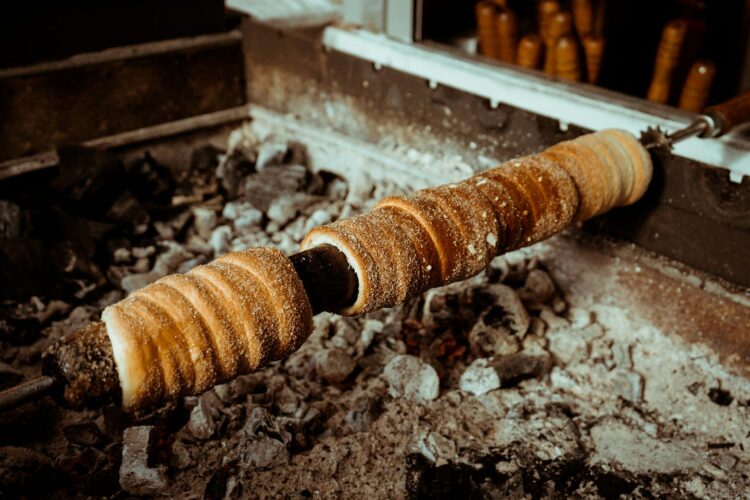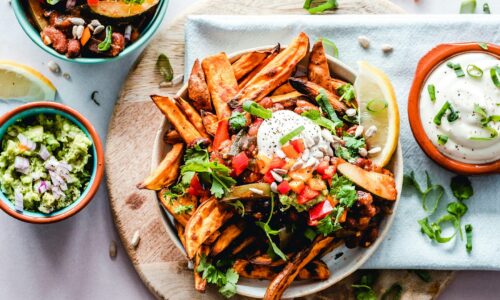Picture this: A wild salad that’s practically a love letter to your local ecosystem. A mushroom foraged from a nearby forest, a sprig of thyme picked fresh from an urban rooftop garden, and a perfectly ripe tomato grown down the street — this isn’t some Instagram food trend. This is hyper-local cuisine, where food doesn’t just come from the earth, it comes from right around the corner.
We’ve all been there, scrolling through Instagram, envying food pics that are so fancy, they look like they belong in a museum instead of your plate. But what if we told you that hyper-local cuisine, blending innovation and tradition, is not only turning the tables on gourmet food, but also putting your neighborhood farmers and urban gardens on the map? Buckle up, because the future of food is here, and it’s about to get a whole lot more personal. No, literally. It’s personal — like, right there in your own backyard.
The Hyper-Local Movement: It’s Like Farm-to-Table, But More Intimate
So, what’s the deal with hyper-local cuisine? It’s essentially a farm-to-table dining experience with a side of neighborly love, combining the freshest ingredients from local farmers, urban farms, and foraged goods. Think of it as food that knows your name. We’re not talking about that distant avocado from halfway across the globe. No, these ingredients are sourced from places so close, they might as well be part of your family tree.
In the world of hyper-local, restaurants and home cooks are collaborating with local farms, urban gardeners, and even foragers to bring the freshest (and sometimes the strangest) ingredients straight to your plate. No middlemen. No long-haul flights. Just good ol’ hometown food — served up with a hearty dollop of sustainability. The idea is to create a direct connection between the farm and your fork (no, really, you can practically wave to the farmer while eating your salad).
Why is Hyper-Local Cuisine a Thing?
It’s good for the environment, good for your taste buds, and good for your Insta feed. The hyper-local movement is a perfect blend of tradition (think: the local dishes passed down through generations) and innovation (hello, urban farming and foraging, welcome to the party). It’s the intersection where fresh, organic ingredients meet the future of food sourcing.
Hyper-local cuisine eliminates the carbon footprint that comes from long-distance food transportation. By sourcing ingredients from nearby farms and urban spaces, we cut down on food miles, reduce waste, and support local businesses — all while enjoying dishes that are fresher than a morning dew.
Let’s not forget the innovation part — hyper-local dishes are allowing chefs and foodies to experiment with ingredients that were once overlooked. From wild garlic growing along the highways to foraged mushrooms tucked in the hills, this isn’t your average shopping trip. You’re essentially eating a local love letter in every bite.
Urban Farms: The New Neighborhood Icons
You might think of farming as something that requires acres of land, vast open fields, and maybe a tractor or two. But the hyper-local trend has turned that idea on its head. Urban farms are cropping up like hotcakes, turning cities into their own food hubs. We’re talking about everything from rooftop gardens to abandoned lots being transformed into lush vegetable patches. And it’s all happening right in the heart of your city.
These urban farms aren’t just about providing food — they’re revitalizing communities, reducing food deserts, and making fresh produce more accessible than ever. Want kale grown just down the street? How about some heirloom tomatoes that were plucked from a rooftop garden five minutes ago? Urban farms are revolutionizing the way we think about local food — and proving that even a city slicker can grow their own basil, no tractor required.
Foraging: The New Trend That’s Both Wild and Delicious
Foraging for food isn’t just for survivalists and people who write books with titles like “How to Live Off the Land.” Thanks to the rise of hyper-local cuisine, foraging has become the it trend for those looking for an adventurous twist on their dinner plate.
But here’s the twist: foraging is no longer just about survival — it’s about discovery. It’s about finding wild herbs, fruits, mushrooms, and greens that are right under your nose, often growing in places you’d least expect — like city parks, sidewalks, and even your own backyard. Forget the pre-packaged, mass-produced “wild” herbs from the supermarket. In the world of hyper-local cuisine, the real wild flavors are those that come from your own region.
Don’t worry; we’re not asking you to start digging up your backyard and throwing dandelions into your salad (unless you really want to). Professional foragers often work with local chefs, sharing their knowledge of which plants are edible and where to find them. And the results? Unique, locally sourced dishes that are as flavorful as they are sustainable.
How Hyper-Local Cuisine Supports Local Farmers and Communities
At the core of the hyper-local trend is the idea of community. By working directly with local farmers and urban farms, restaurants and home cooks are helping to strengthen the local economy, reduce food waste, and support small businesses. When you buy produce from a local farm or a forager in your neighborhood, you’re not just buying food — you’re investing in the future of your community.
Think about it: you’re not just eating fresh food, you’re part of a movement that’s reshaping the food system. Hyper-local cuisine is about connection — the connection between the food, the land, and the people who grow it.
The Future of Hyper-Local Cuisine: Innovation Meets Tradition (And It Tastes Amazing)
We’re living in a time where innovation is essential to solve some of the world’s toughest food challenges. But, as with all good things, the future of food lies in blending the best of both worlds. Hyper-local cuisine is where tradition meets innovation, where new techniques and sustainability practices are applied to old-world, locally sourced ingredients. The future of food doesn’t need to be complicated — it just needs to be fresh, local, and delicious.
So, next time you sit down to a meal made with ingredients sourced just around the corner, remember: you’re part of something bigger. You’re embracing the future of food while honoring tradition. And you’re also making your neighborhood a better, more flavorful place. What’s not to love?
Hyper-local cuisine, farm-to-table, urban farms, foraging, sustainable food, local ingredients, innovative cuisine, fresh produce, community-based food




